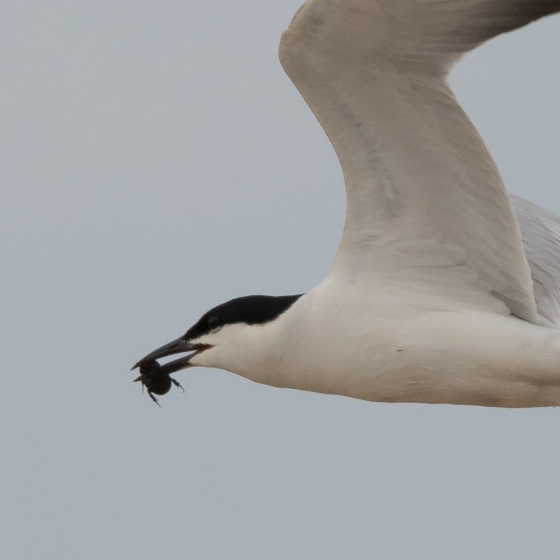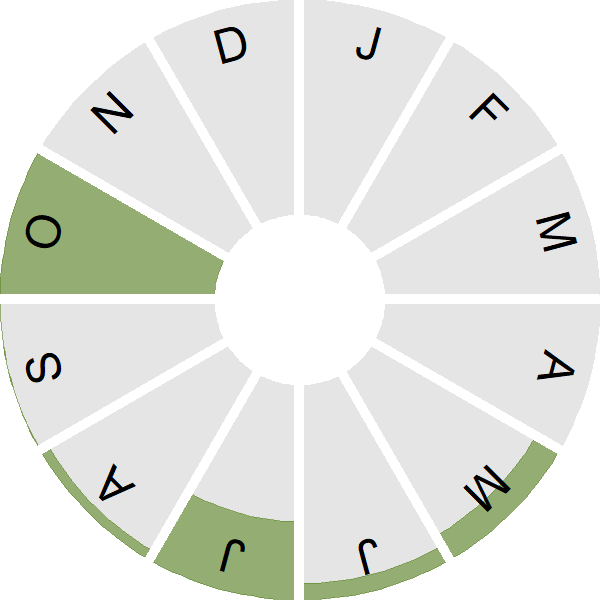Gull-billed Tern

Introduction
A medium-sized tern with a short, stout and all black bill. Gull-billed Tern is a scarce but annual spring visitor from southern Europe; some individuals stay a while and the species has attempted to breed here.

Key Stats
Status and Trends
Conservation Status
Population Size
Population Change
Population trends of this scarce species are not routinely monitored.
Distribution
This species is a rare vagrant and was recorded during Bird Atlas 2007–11 as shown on the map.
or view it on Bird Atlas Mapstore.
European Distribution Map
Distribution Change
This vagrant is too rarely reported to map distribution change.
Seasonality
Gull-billed Tern is a rare vagrant, mostly recorded in summer, though sometimes in autumn.
Weekly pattern of occurrence
The graph shows when the species is present in the UK, with taller bars indicating a higher likelihood of encountering the species in appropriate regions and habitats.

Movement
Britain & Ireland movement
European movements
EuroBirdPortal uses birdwatcher's records, such as those logged in BirdTrack to map the flows of birds as they arrive and depart Europe. See maps for this species here.
The Eurasian-African Migration Atlas shows movements of individual birds ringed or recovered in Europe. See maps for this species here.
Biology
Survival and Longevity
Survival is shown as the proportion of birds surviving from one year to the next and is derived from bird ringing data. It can also be used to estimate how long birds typically live.
Classification, names and codes
Classification and Codes
- Order: Charadriiformes
- Family: Laridae
- Scientific name: Gelochelidon nilotica
- Authority: JF Gmelin, 1789
- BTO 2-letter code: TG
- BTO 5-letter code: GUBTE
- Euring code number: 6050
Alternate species names
- Catalan: curroc
- Czech: rybák cernozobý
- Danish: Sandterne
- Dutch: Lachstern
- Estonian: naerutiir
- Finnish: hietatiira
- French: Sterne hansel
- German: Lachseeschwalbe
- Hungarian: kacagócsér
- Icelandic: Sandþerna
- Irish: Geabhróg Ghobdhubh
- Italian: Sterna zampenere
- Latvian: kapu zirinš
- Lithuanian: kirasnape žuvedra
- Norwegian: Sandterne
- Polish: rybitwa krótkodzioba
- Portuguese: trinta-réis-de-bico-preto / tagaz
- Slovak: rybárka krátkozobá
- Slovenian: crnonoga cigra
- Spanish: Pagaza piconegra
- Swedish: sandtärna
- Welsh: Môr-wennol Ylfinbraff

